This Exquisite Milan Apartment Is an Homage to ‘the Wild Women of the ’70s’

Wealthy cities tend to get remade, frequently and boldly, and Milan is undoubtedly a child of this type of reinvention. The collision of industry, artistry, and finance has created a layered urban archaeology that jumps from Roman to Renaissance to postmodern.
So when ELLE DECOR A-List architect Hannes Peer first saw his client’s second-floor apartment in Milan’s center, it felt like a rare opportunity. The homeowner, Francesco Dagnino, a lawyer and single father of two young children, pushed the designer to be daring in his renovation of the three-bedroom home. “I am easily bored,” Dagnino says. Peer agreed that the space, in the bustling Brera neighborhood, needed a new start, and embarked on a gut renovation.
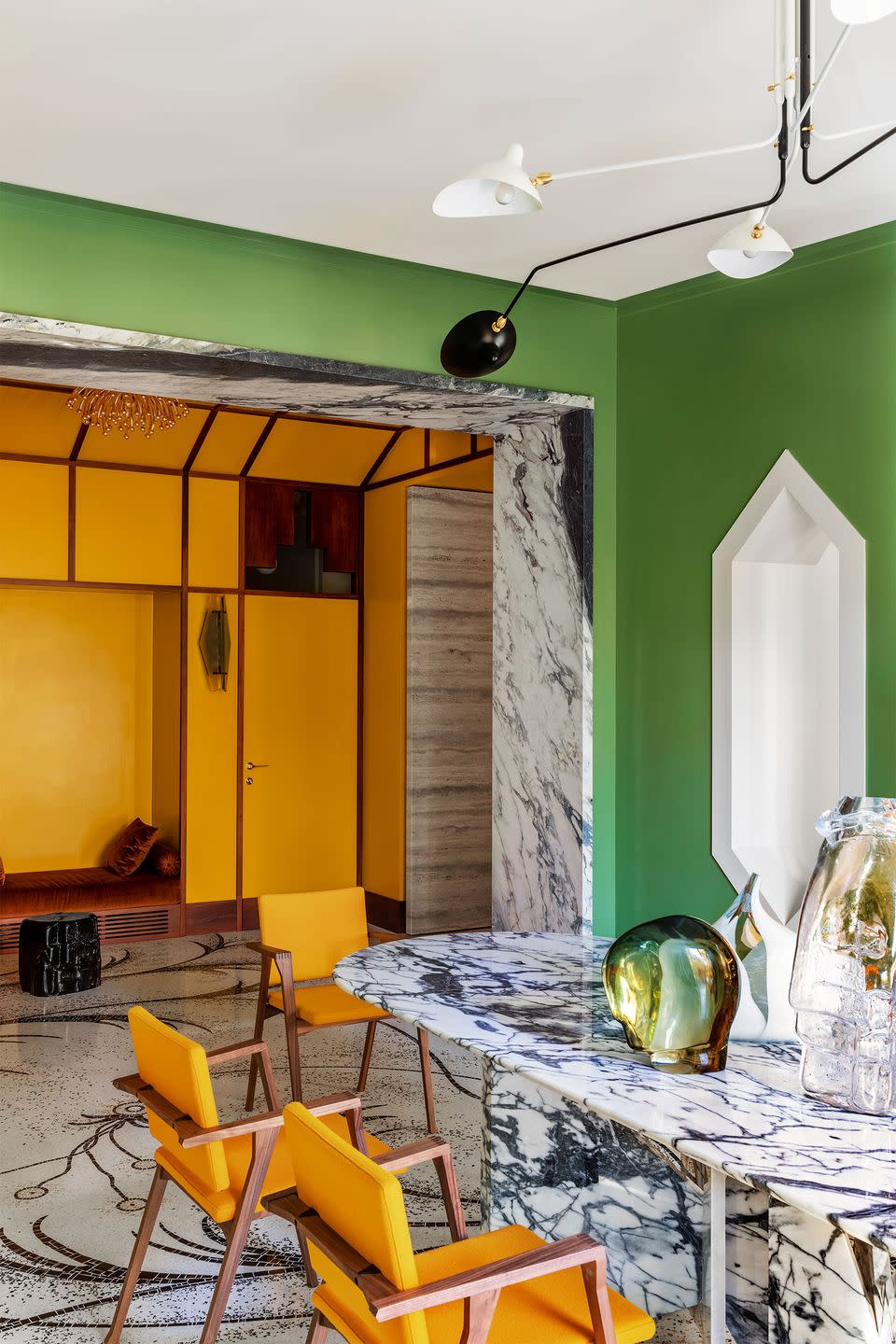
The change begins in the bold entry, where movable walls of Roman travertine are paired with a bas-relief artwork by Ursula Huber, who happens to be Peer’s mother. The Palladiana terrazzo floor was the only remaining element from before the renovation—when the space was the client’s law office—and even that was ripped up and reinstalled.
To the left of the entry, a home gym, complete with punching bag, sports mustard walls and rubber tile flooring. The Venetian blinds here and in the bedrooms are the only window treatments in the apartment, which is surrounded on three sides by a small park, lending a sense of privacy. On the entrance’s opposite flank is a more fanciful space: a vestibule painted a glossy goldenrod, with a chamfered ceiling and inset seating that feels intimate and inviting.
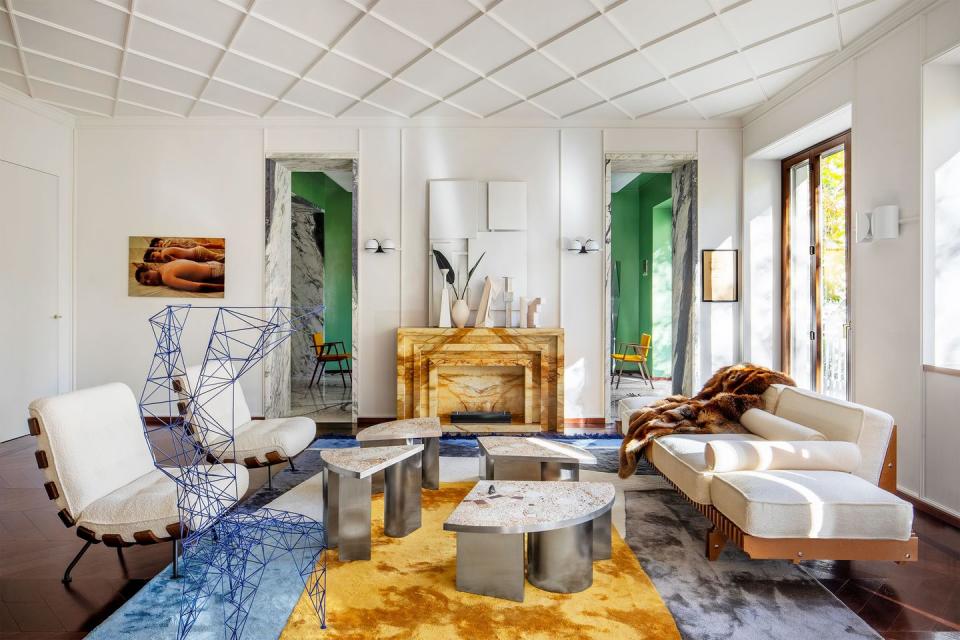
Peer’s approach is always scholarly, but here the dial is turned up so that even for the uninformed, a ziggurat-shaped transom window or mosaic floor seems in keeping with the metropolis around it. But in a city where architects and designers are household names, design buffs will notice the many references to Milan’s architectural legacy: They’ll spot the link, for instance, between the vestibule and dining room’s mosaic floor and ante-chambers designed in the 1950s and ’60s by artist Francesco Somaini for modernist buildings by Luigi Caccia Dominioni.
Entry
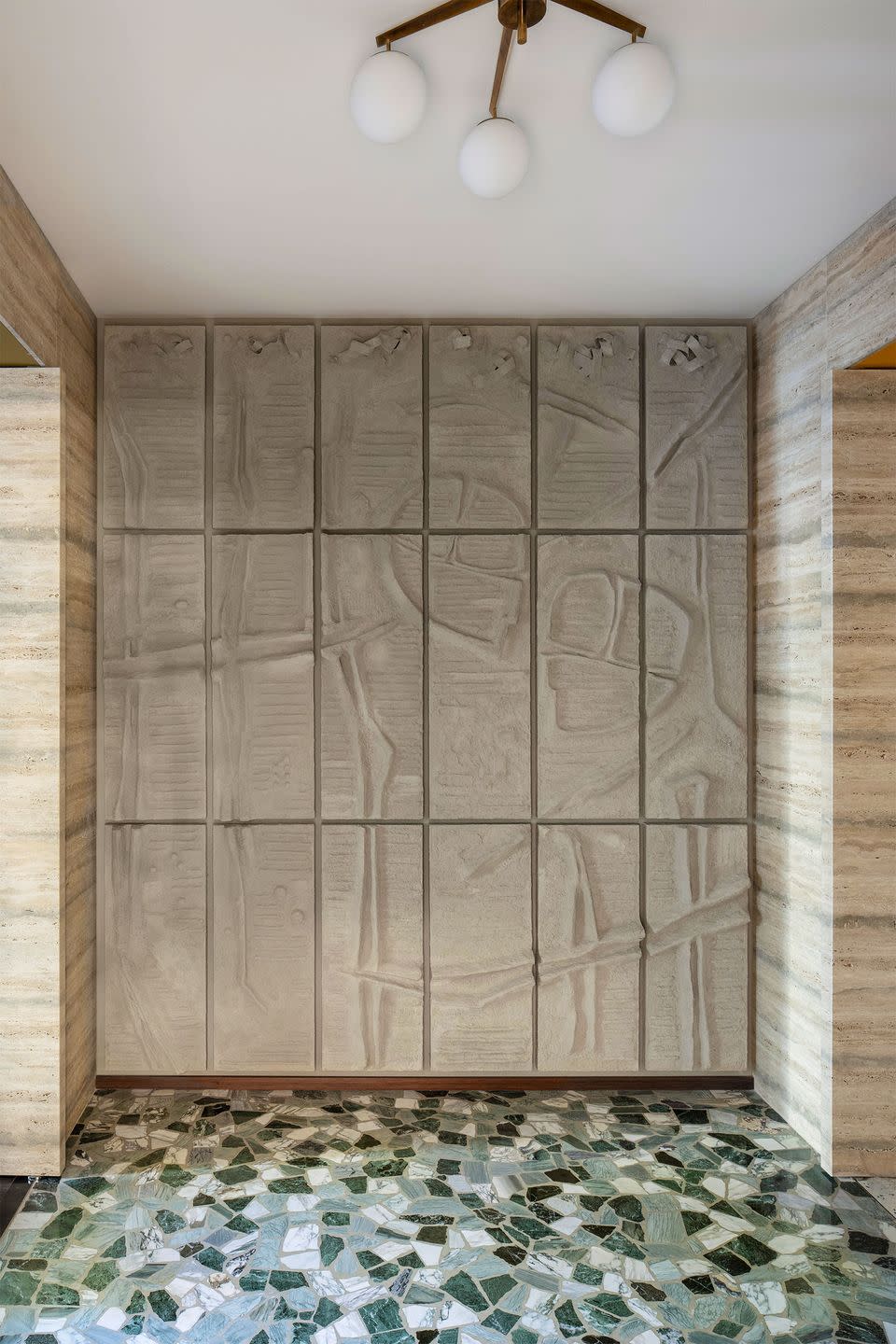
The wall frieze is by Ursula Huber, the flooring is in Verde Alpi, Carrara, and Bardiglio marbles. The pendant is by Angelo Lelli.
Vestibule
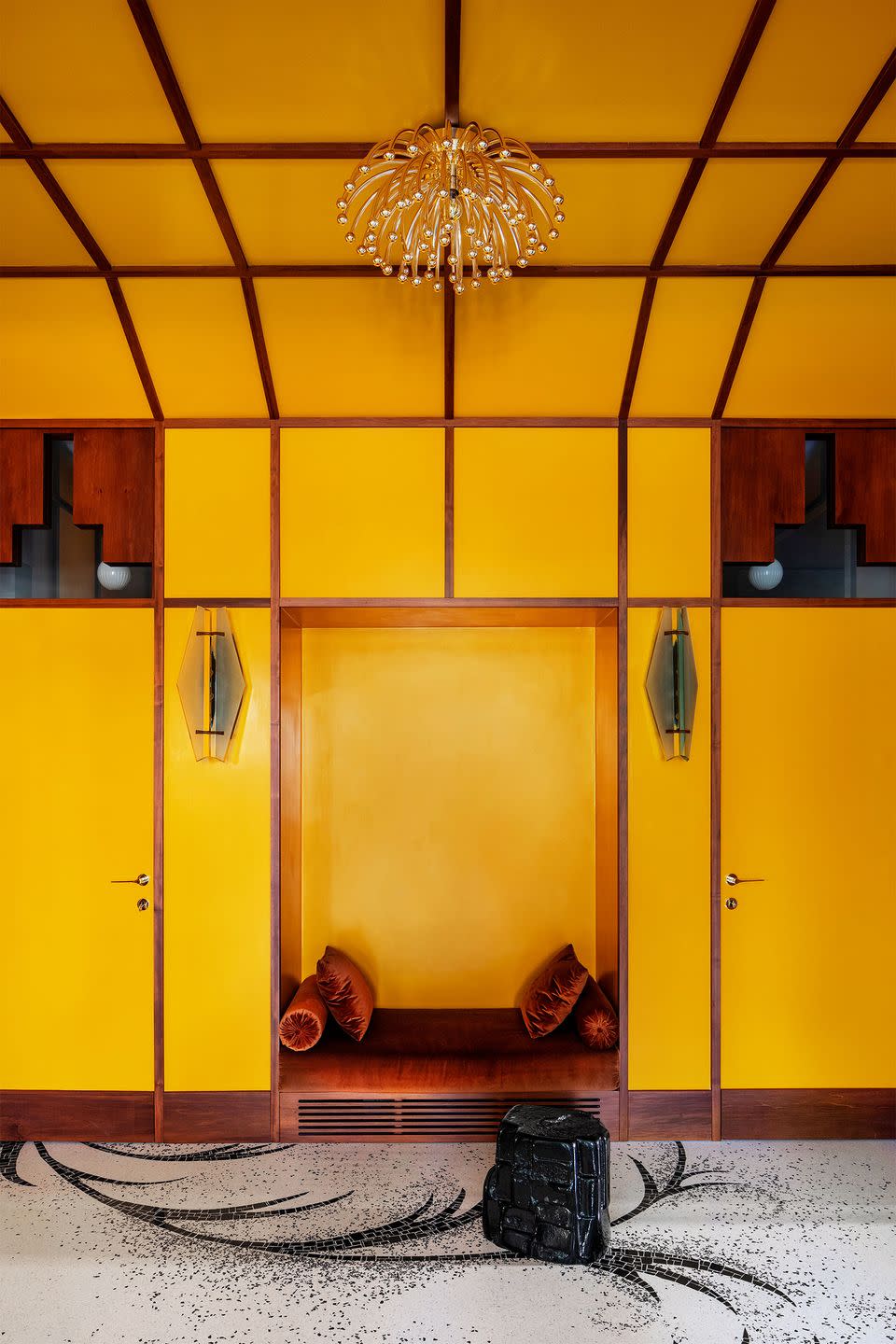
The flooring was created using the Venetian Seminato technique. The custom daybed is in a Dedar fabric, the sconces are vintage, and the pendant is by Tetrarch Studio.
Dining Room

The table in Pele de Tigre marble is by Hannes Peer for La Chance, the Franco Albini dining chairs are by Cassina, the chandelier is by Serge Mouille, and the glass sculpture is by Ursula Huber.
Dining Room
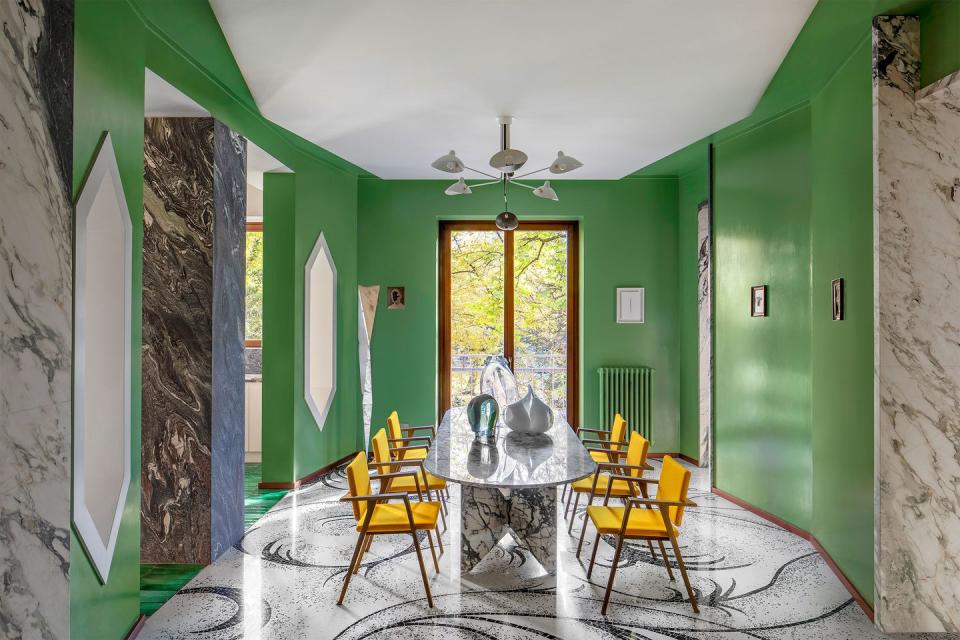
In the hexagonal dining room, the floor lamp sculpture is by Marco Acerbis, and the miniature artworks (back wall, from left) are by Nicola Samorì, Lucio Fontana, and Philippe Rinaudo (two at right).
Kitchen
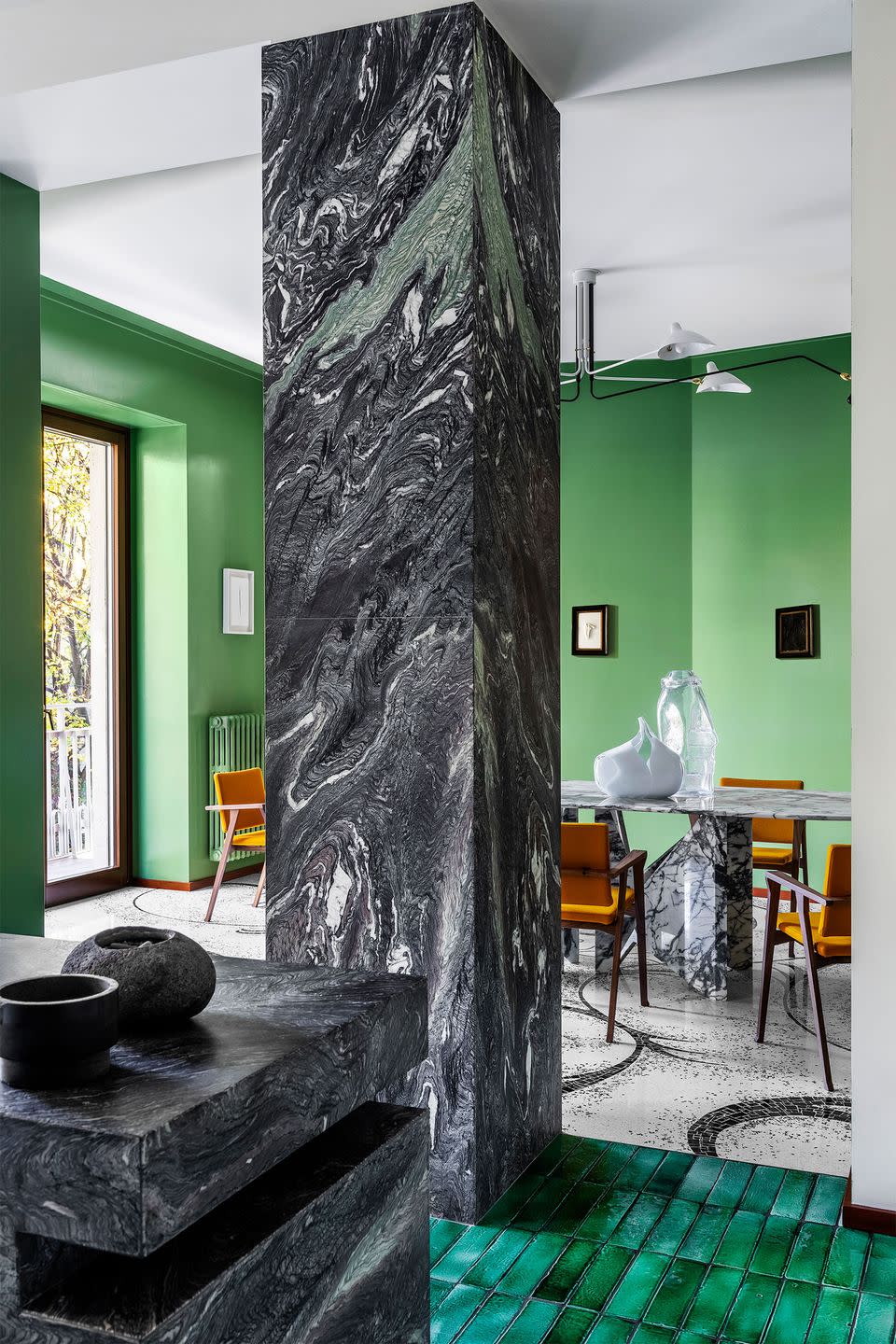
The island and wall column are clad in Cipollino Rosso marble.
Kitchen
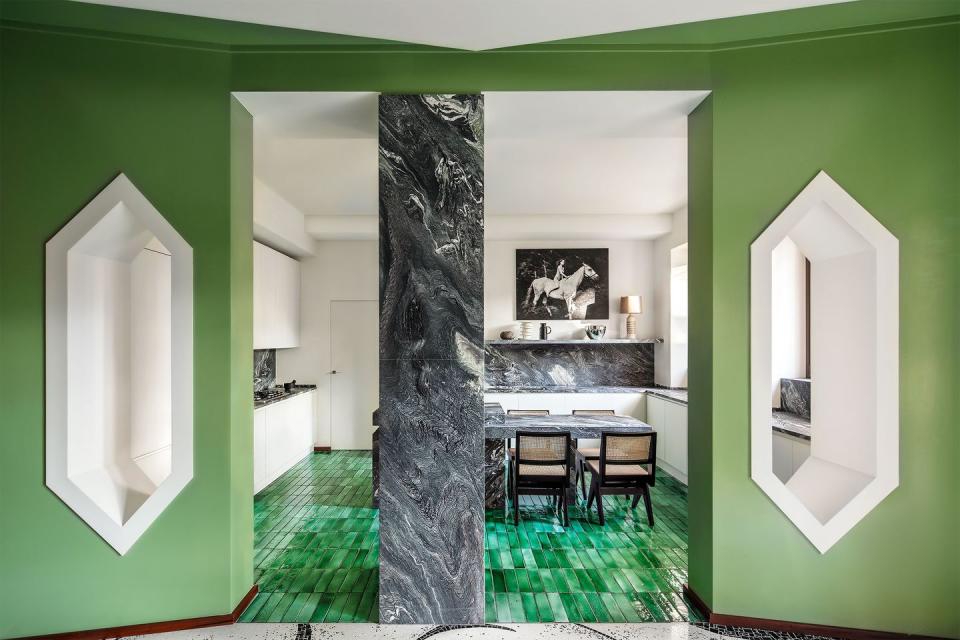
The dining chairs in black stained oak and Vienna straw are by Cassina, and the emerald green ceramic floor tiles are by Fornace Bernasconi. The photograph above the shelf is by Renée Jacobs.
Living Room
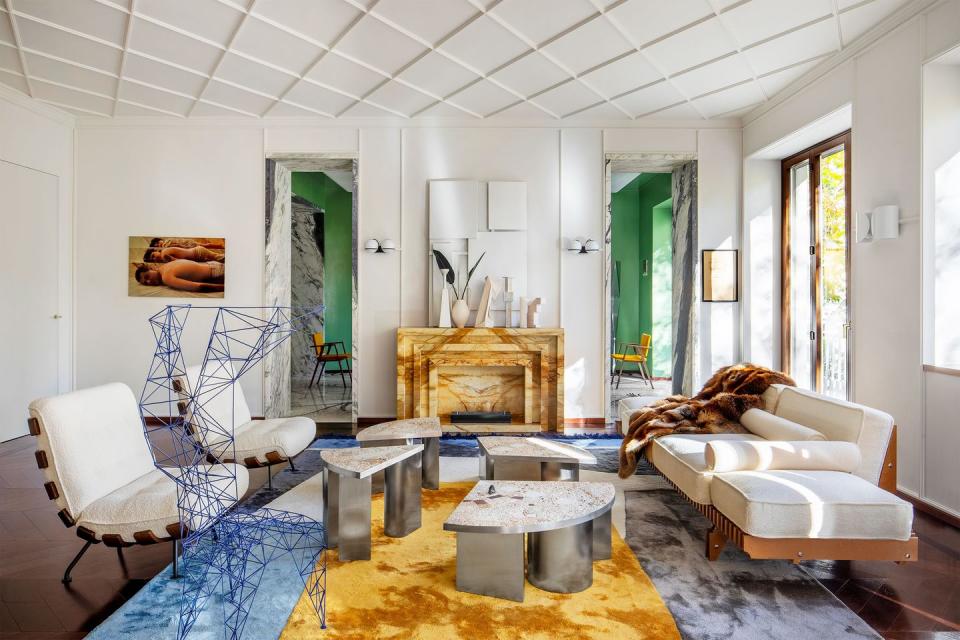
The living room overlooks a garden and has a custom Art Deco–inspired mantel in Giallo Siena marble. The sofa is by Hannes Peer for Spotti Edizioni Milano, the custom cocktail tables with mosaic tops are by Paolo Racagni, and the lounge chairs by Martin Eisler. The blue wire chair is by Tom Dixon, and the photograph (left) is by Federica Belli.
Living Room
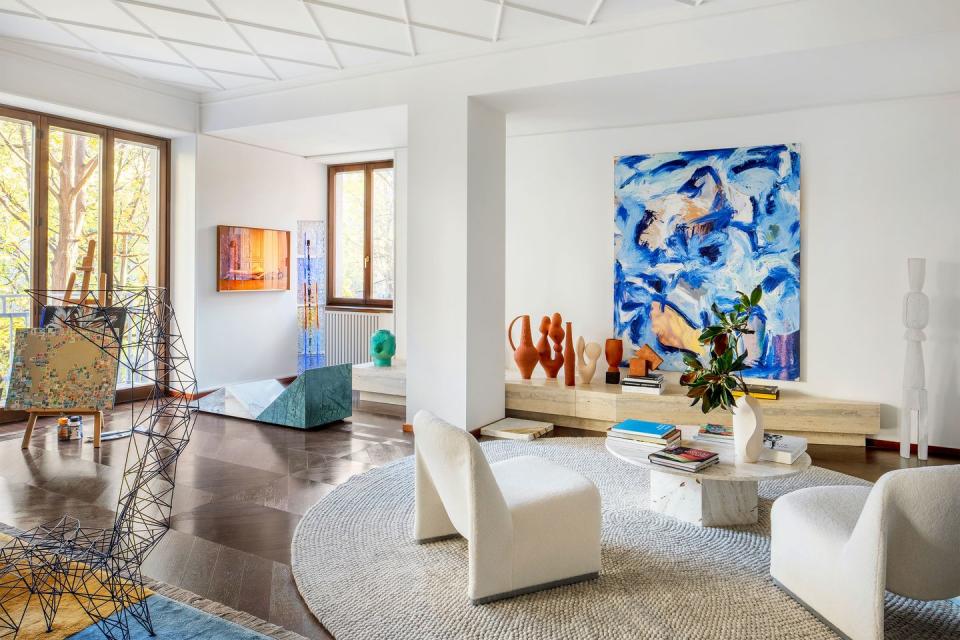
Hannes Peer designed the Murano glass floor lamp and chaise lounge (left) and the travertine sideboard. The vintage armchairs are by Giancarlo Piretti, and the cocktail table is by Gubi. The photograph (left) is by Federica Belli, and the painting is by Donna Huanca.
Living Room
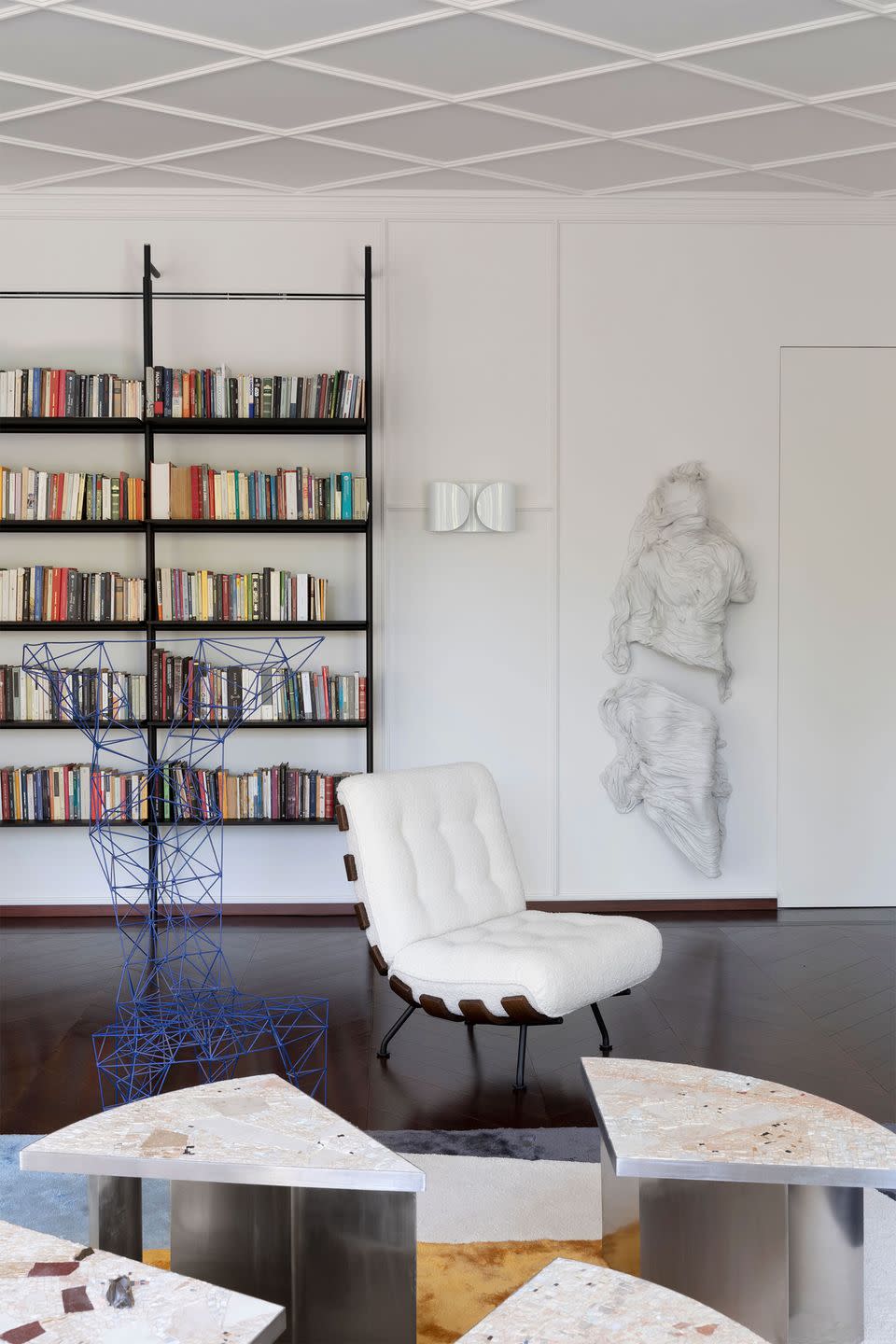
The bookshelf is by Michael Anastassiadis for B&B Italia, and the wall sculpture is by Pietro Campagnoli.
Primary Bedroom
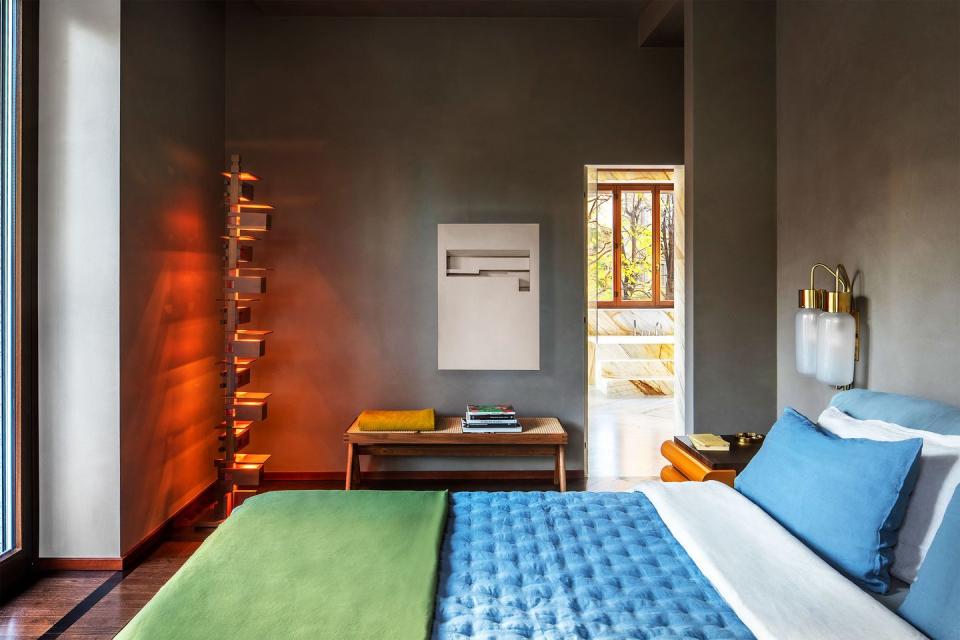
The floor lamp is by Frank Lloyd Wright, and the bed is by Paola Navone for Baxter. The bench is by Pierre Jeanneret for Cassina, the nightstand by Nanda Vigo, and the vintage sconce by Luigi Caccia Dominioni. The artwork is by Hannes Peer.
Dressing Room
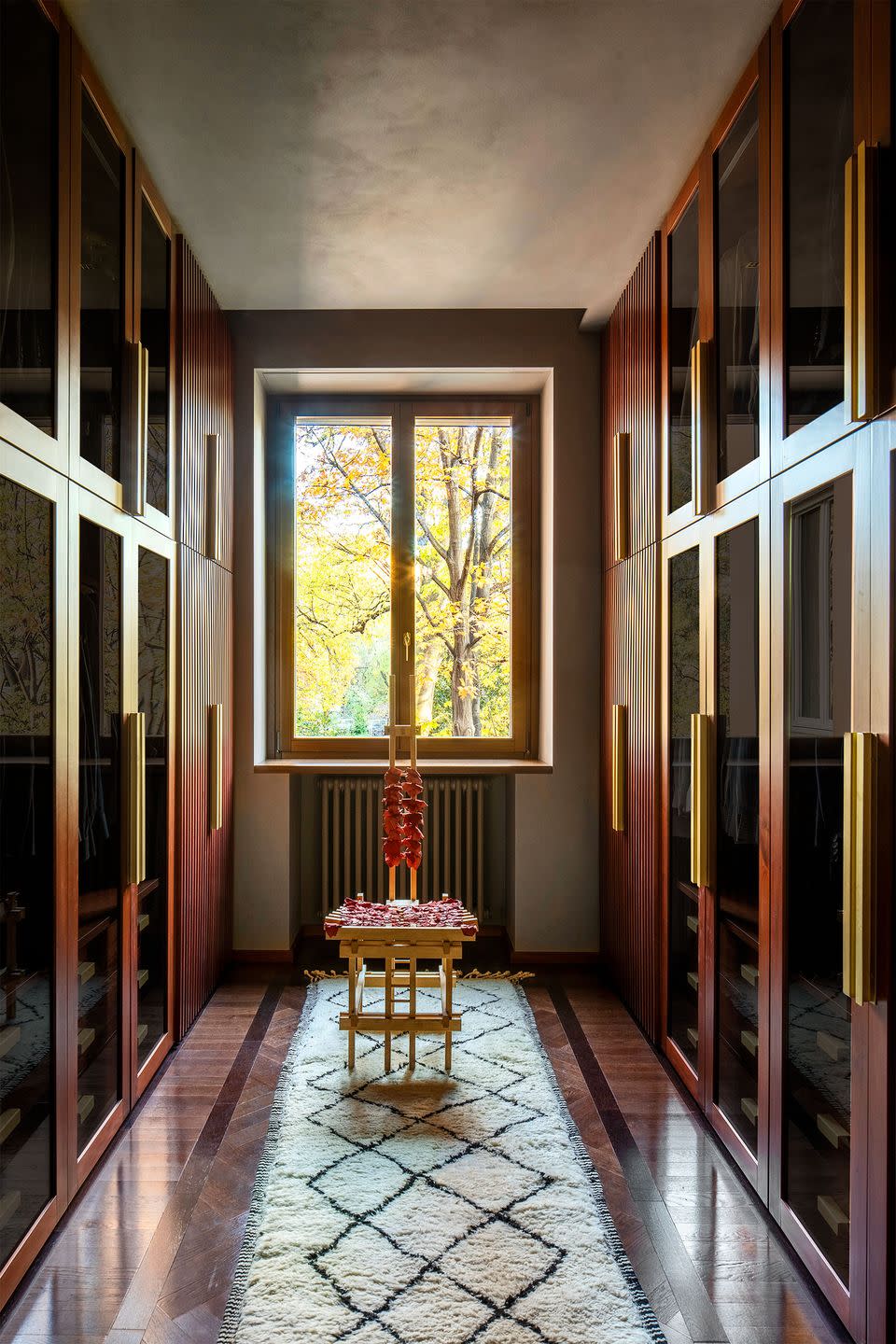
The primary dressing room has a custom closet in mahoganized birchwood. The chair sculpture is by Anacleto Spazzapan.
Primary Bath
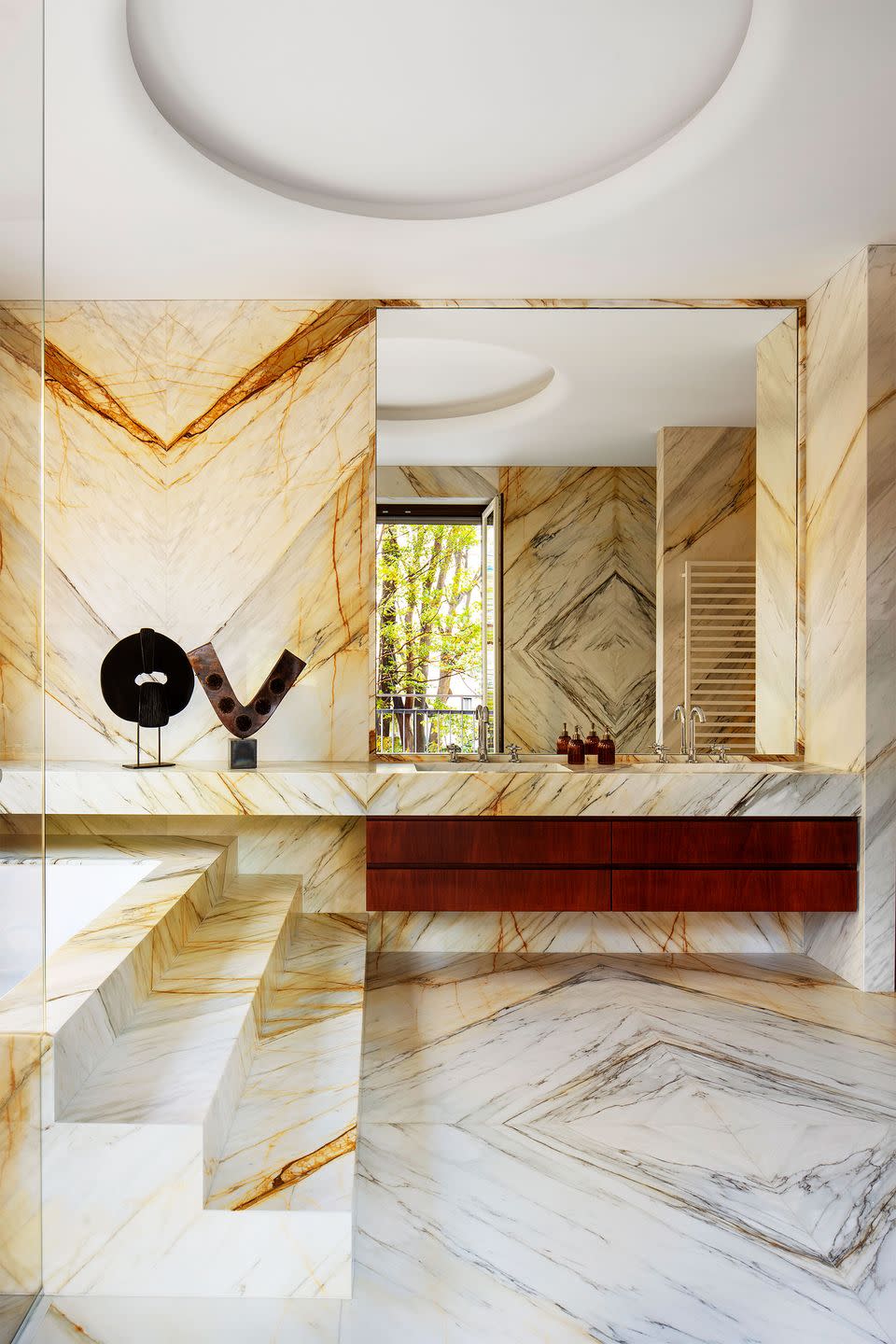
Inspired by Jean-Michel Frank’s 1925 Paris sanctuary, the bathroom’s walls and floor are in Calacatta Paonazzo marble, and the mirror is custom. The sculptures are by Laboratorio Avallone.
The Architect and Designer
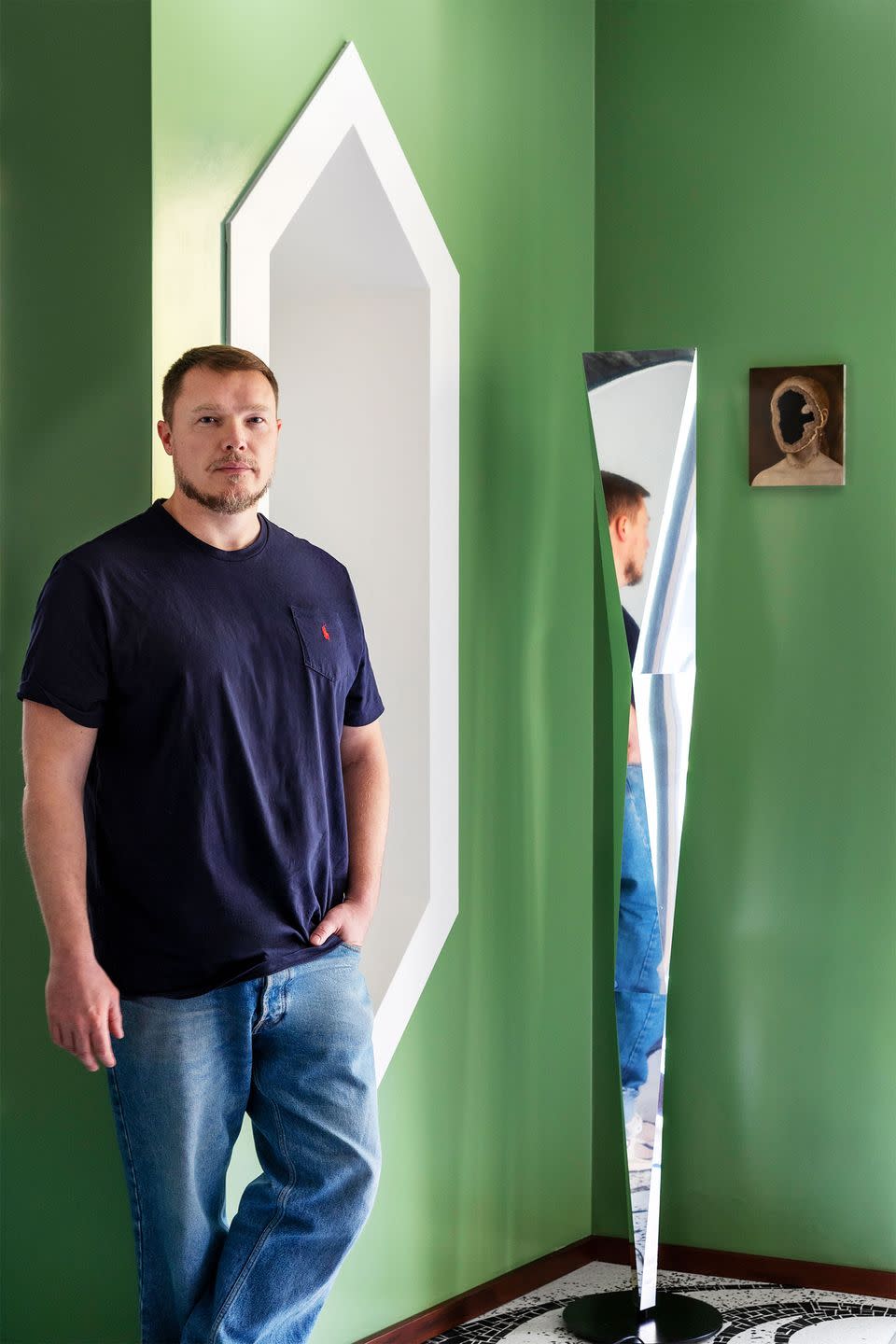
Hannes Peer in the dining room. The floor lamp sculpture is by Marco Acerbis, and the artwork is by Nicola Samorì.
The Homeowner
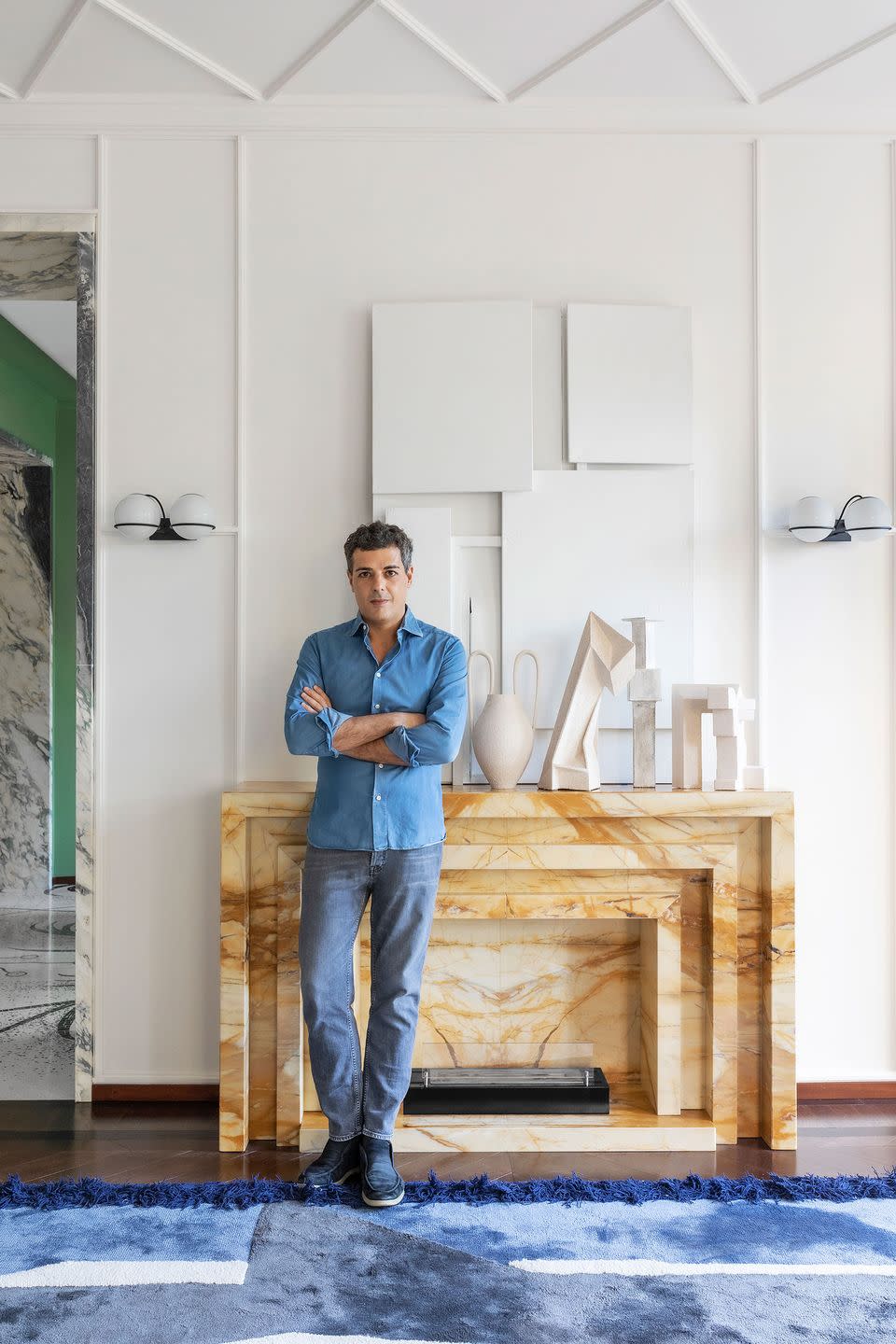
Francesco Dagnino in the living room. The custom fireplace is in Giallo Siena marble, the sconces are by Gino Sarfatti, and the objects on the mantel are by Ceramiche Milesi.
The ode to his adopted city (Peer is originally from South Tyrol, in northern Italy) continues. “I have included references to Gio Ponti,” Peer notes. A case in point: the dining room, lacquered a vivid green, where the Italian modernist’s sway is evident in the room’s hexagonal shape. Another influence: “the wild women of the ’70s like Gae Aulenti, Nanda Vigo, and Gabriella Crespi.” The latter designer has always been inspirational to Peer, who admires her uncompromising boldness.
In an apartment where only the bedrooms have doors, Peer found clever ways to demarcate spaces: Elsewhere, he employed one of his signature moves, lining open thresholds in exquisite marbles. Another of his classic devices is the studied use of a sophisticated palette. The colors begin with a bang, with strong hues that lessen in intensity as one moves deeper into the space, toward the minimally furnished living room. Then the focus shifts to the view of the Perego Garden, one of the few remaining plots of green space within Milan’s inner ring.
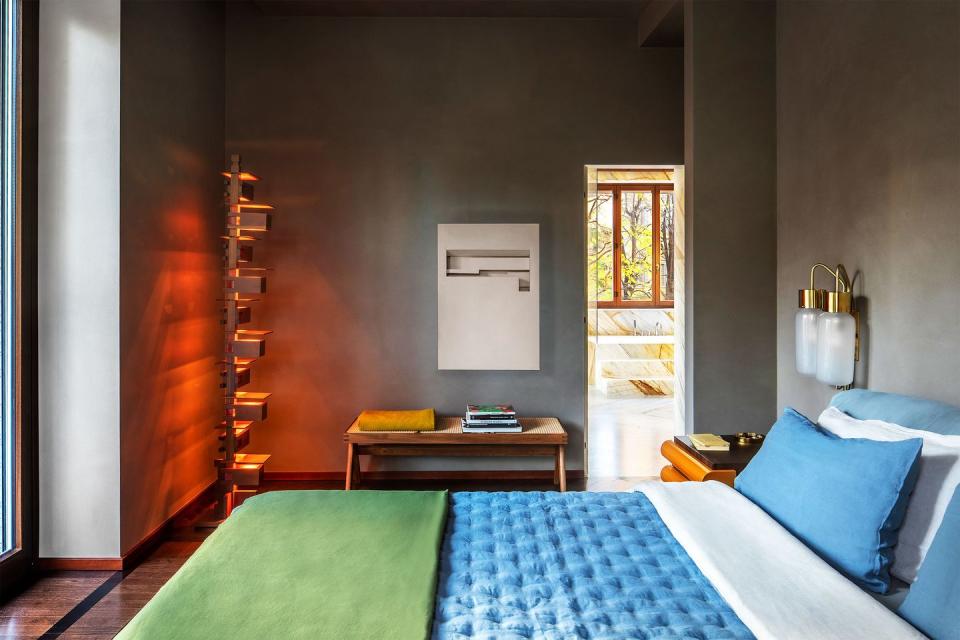
Peer’s own furniture designs contribute a strong, cohesive point of view; the dining room table is from his collection for La Chance. Throughout the apartment, similar shapes repeat in a variety of materials, whether marble, wood, or resin. The cocktail table reinterprets the massive modularity of Peer’s Quadro tables but then adds mosaics in a subtle echo of the tilework in the vestibule and dining room. It is an approach that elevates his interiors to the level of a Gesamtkunstwerk, or a total artwork.
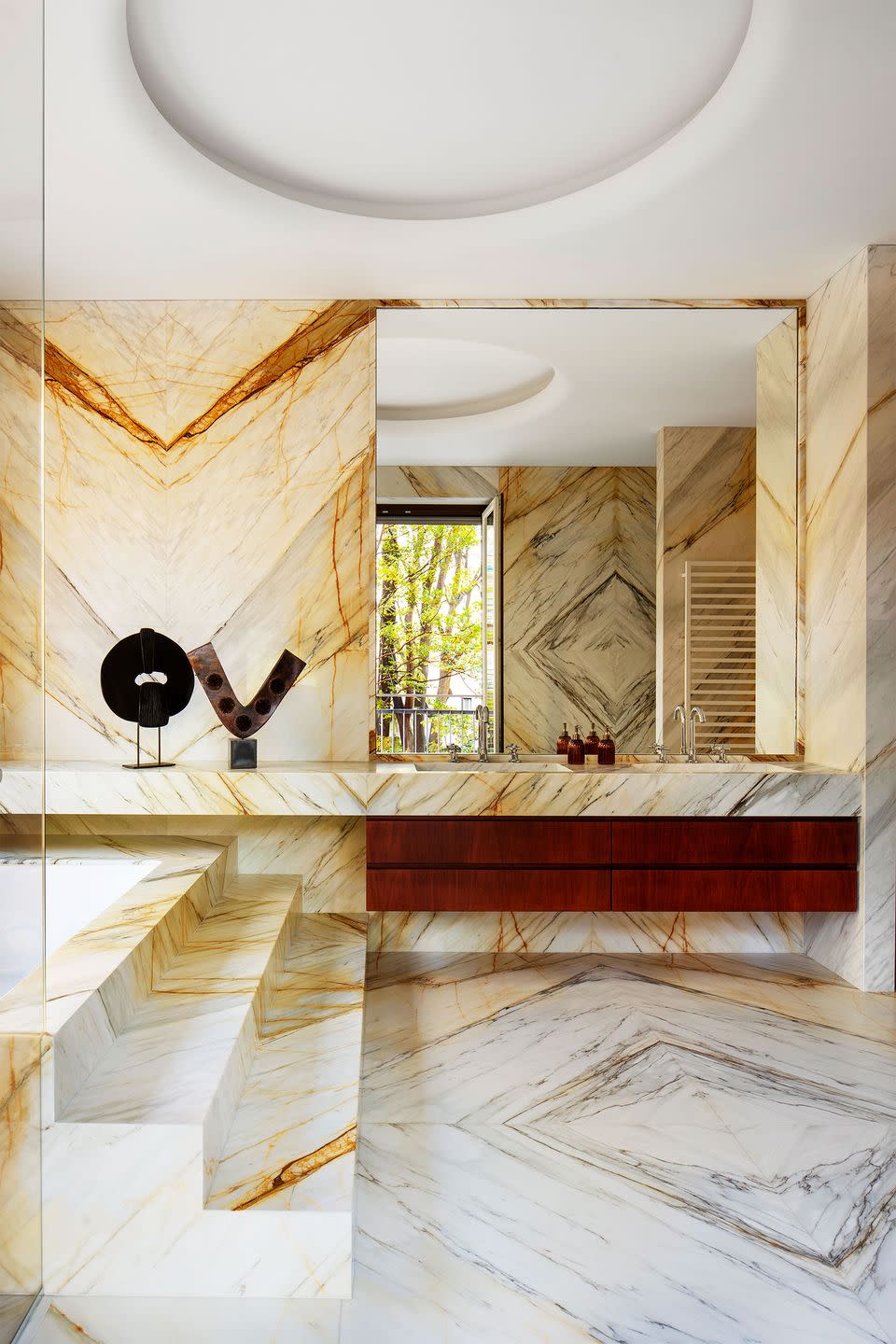
In the private areas of the apartment, walls in a cement resin finish create a peaceful, organic atmosphere. The innermost space, the primary bath, opens to the outside. Here, Calacatta Paonazzo marble, a favorite of Jean-Michel Frank’s, is butterflied with precision, while the recessed ceiling references James Turrell. “Every room has its own story, its own boldness, its own quietness,” Peer says.
While almost everything refers back to history, the effect is fresh and luxurious and an illustration of how Peer is creating a new vernacular of design. “This project,” he says, “is my love letter to Milan.”
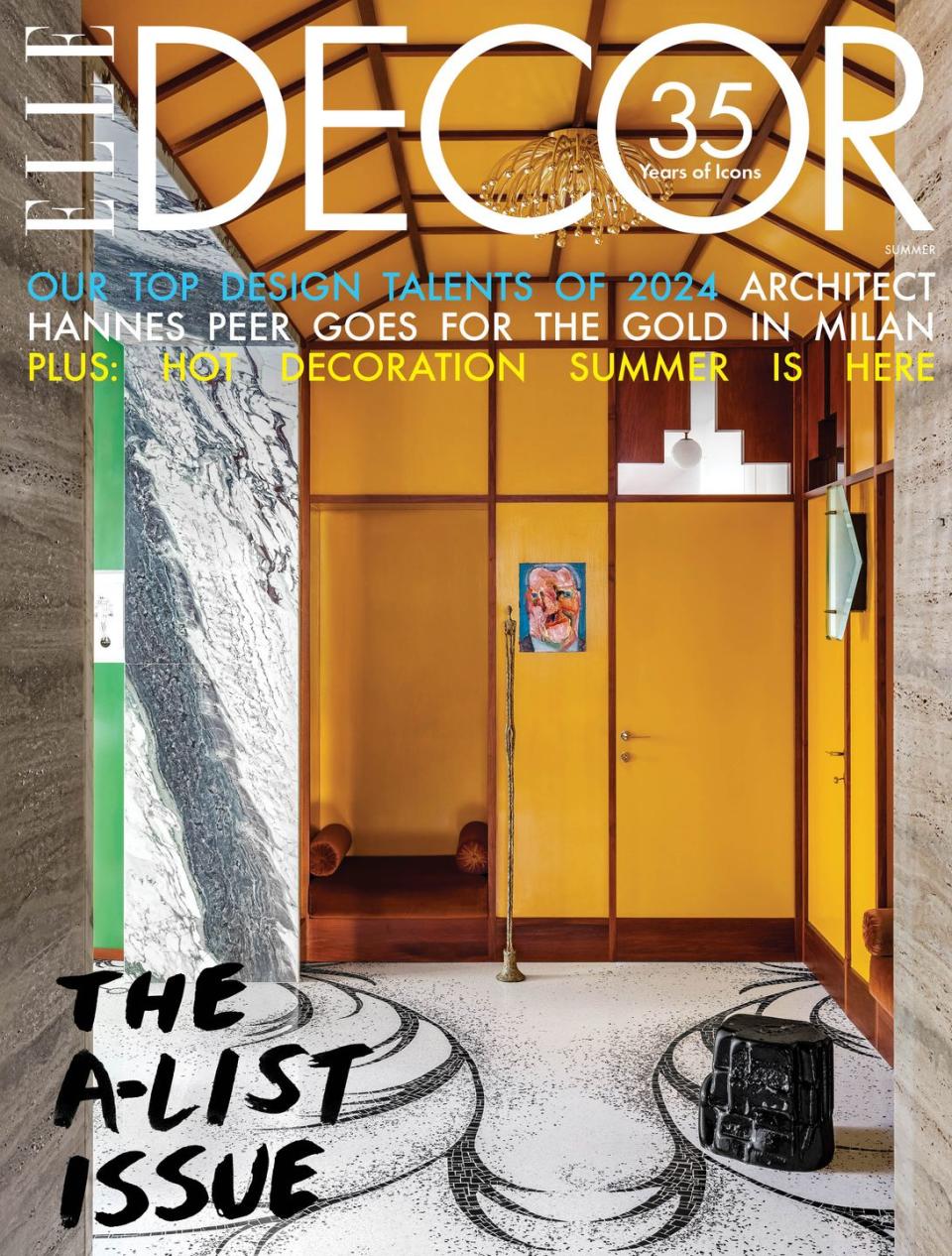
This story originally appeared in the Summer 2024 issue of ELLE DECOR. SUBSCRIBE
You Might Also Like


